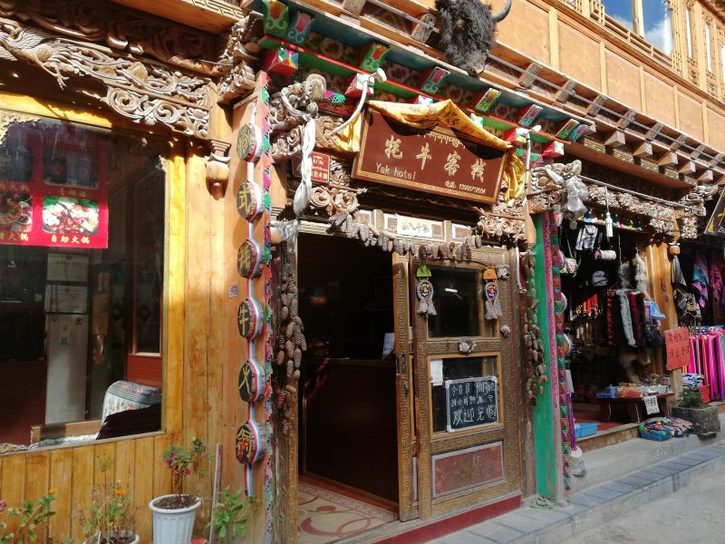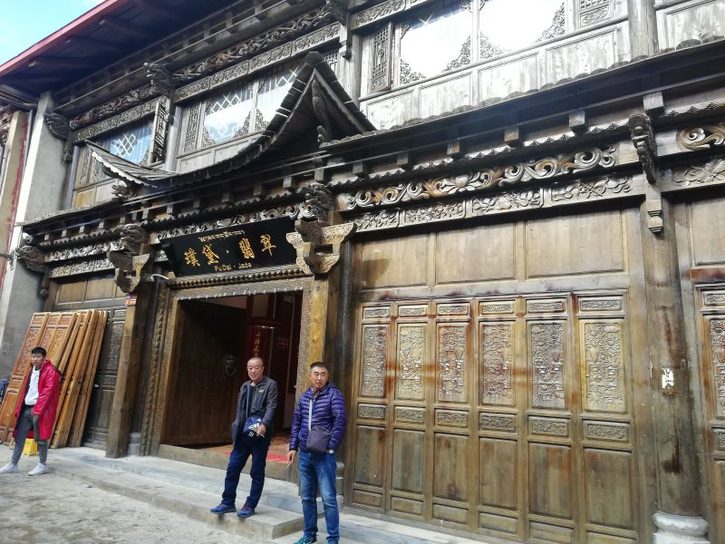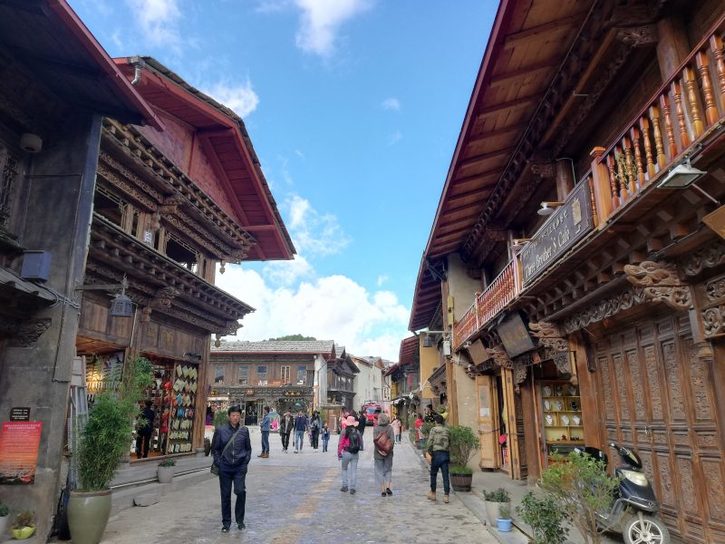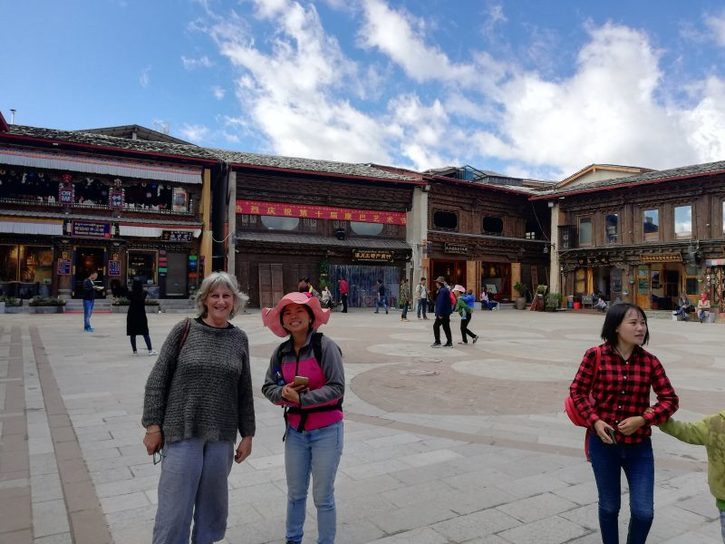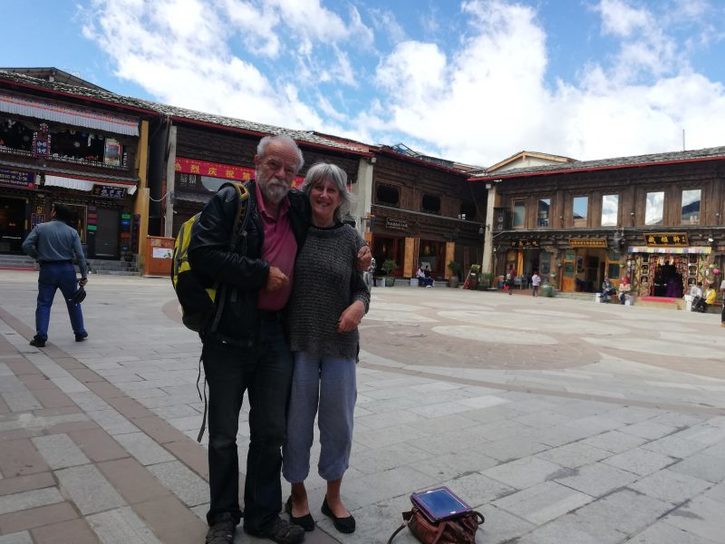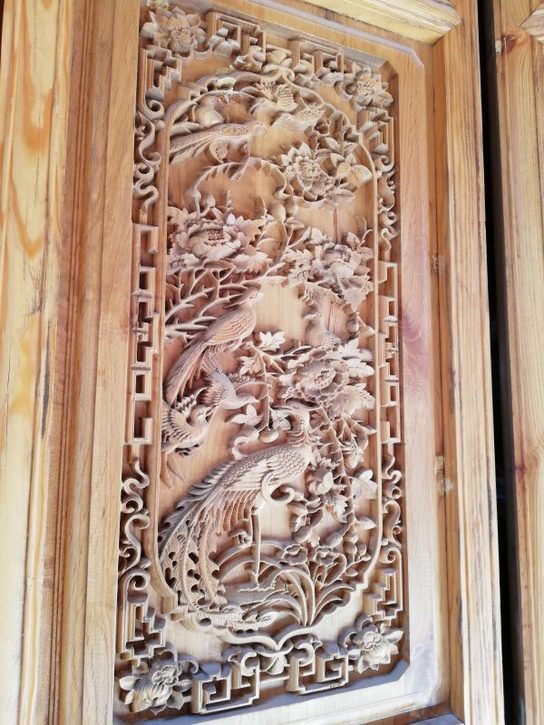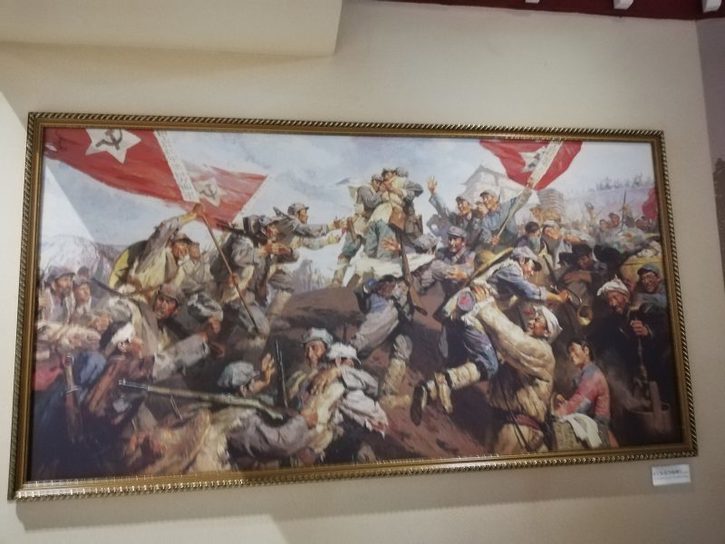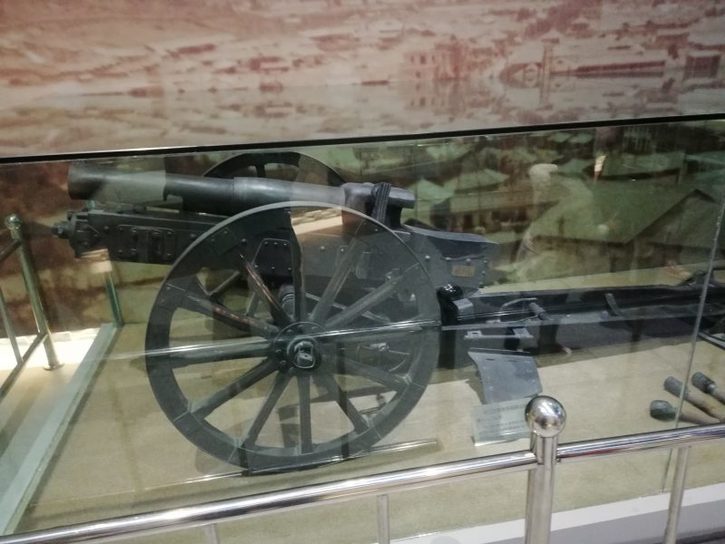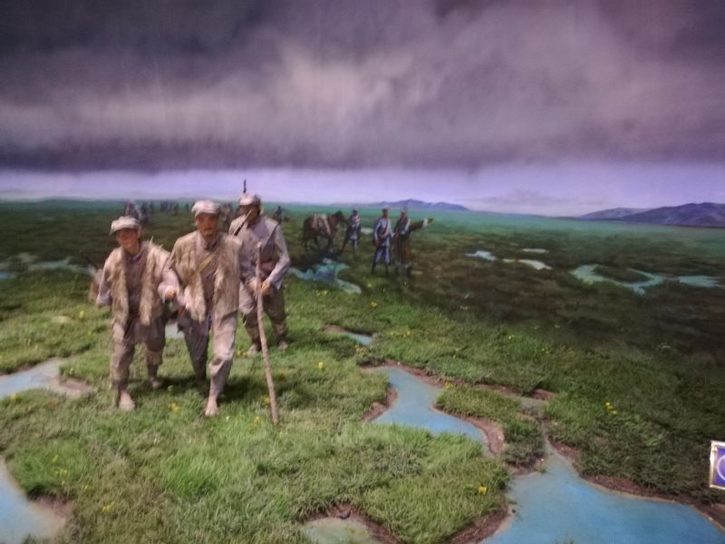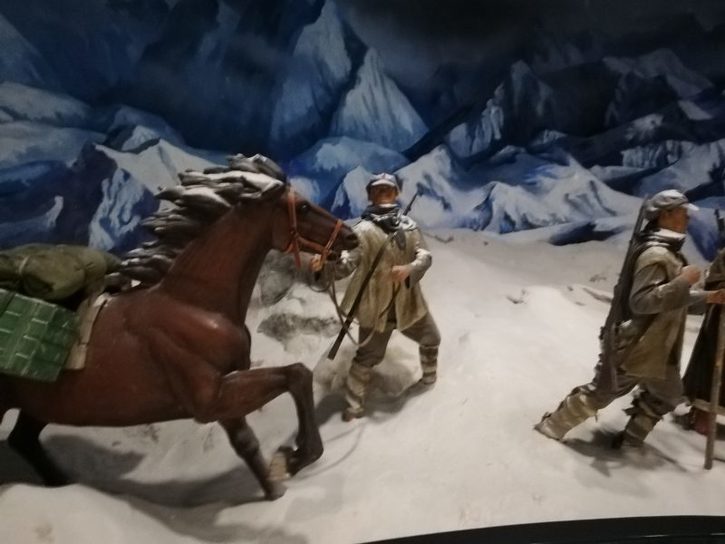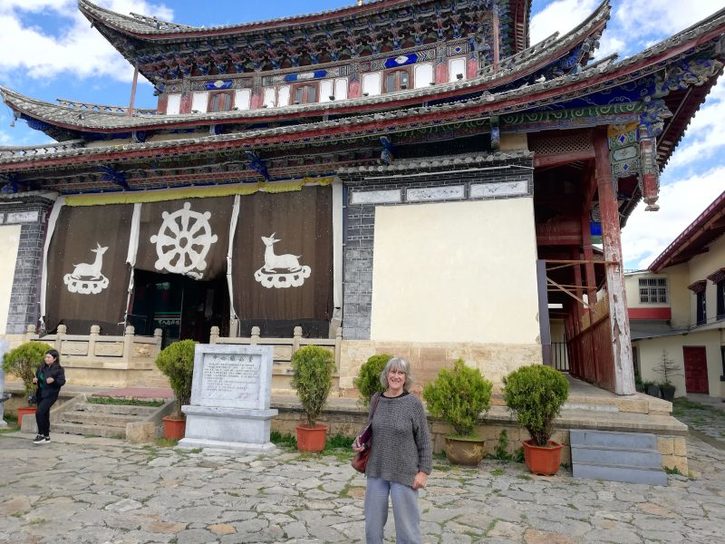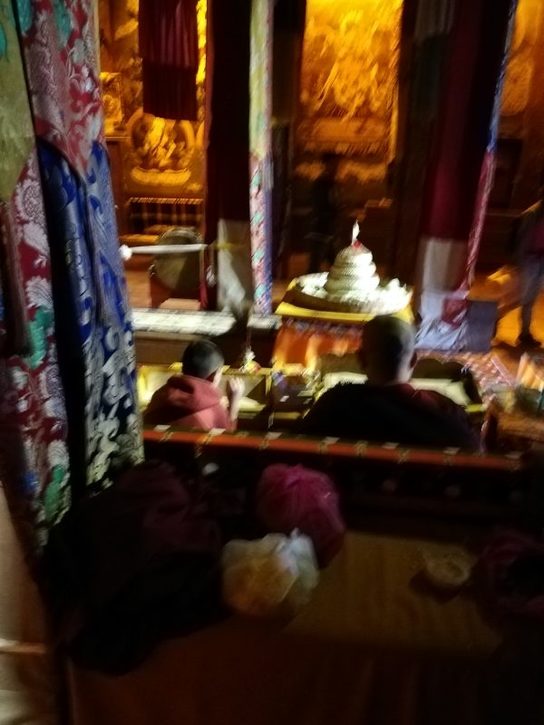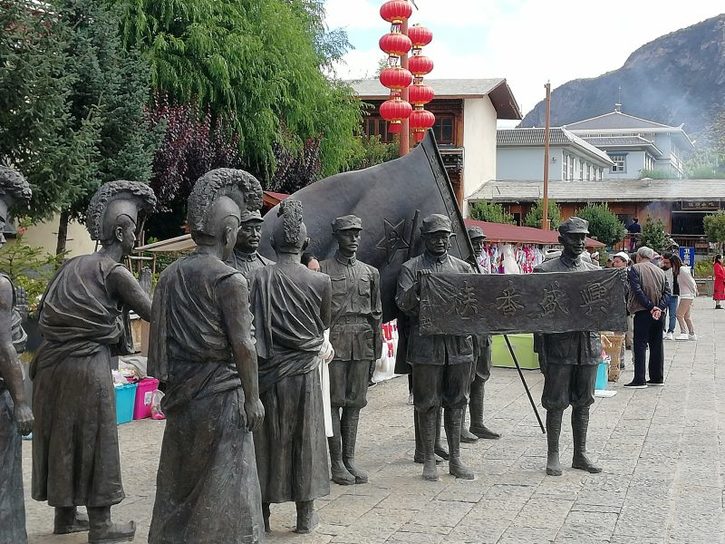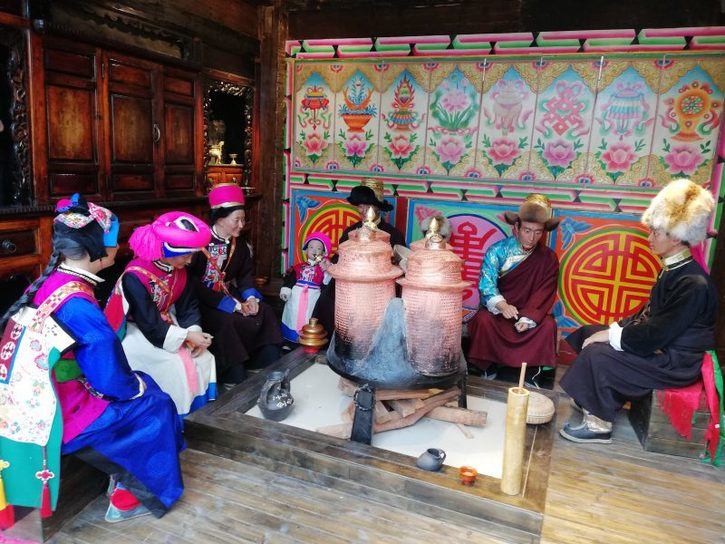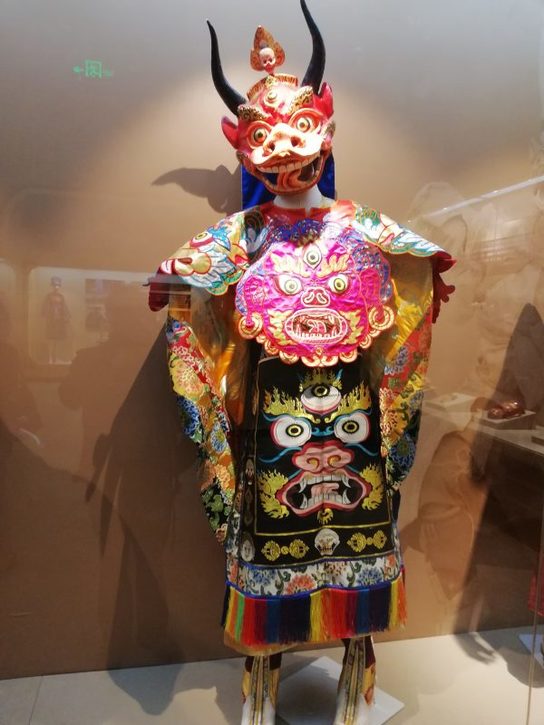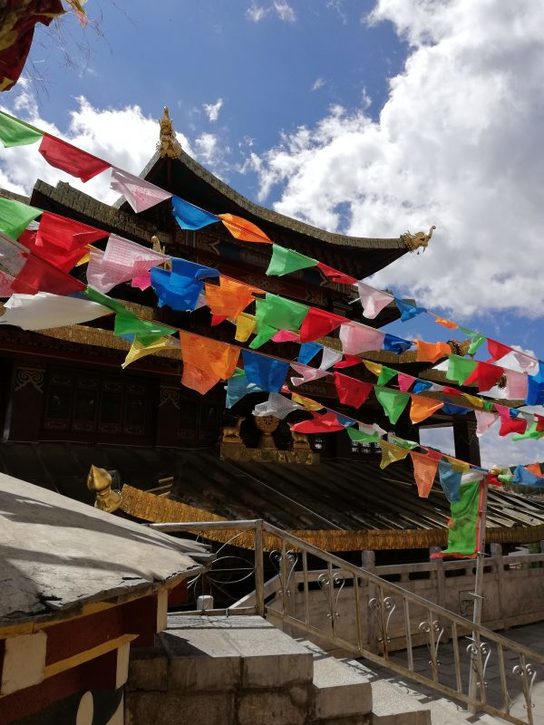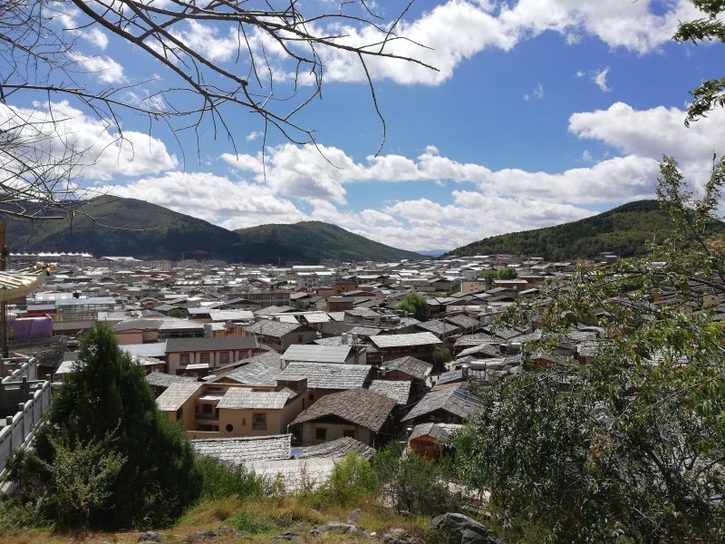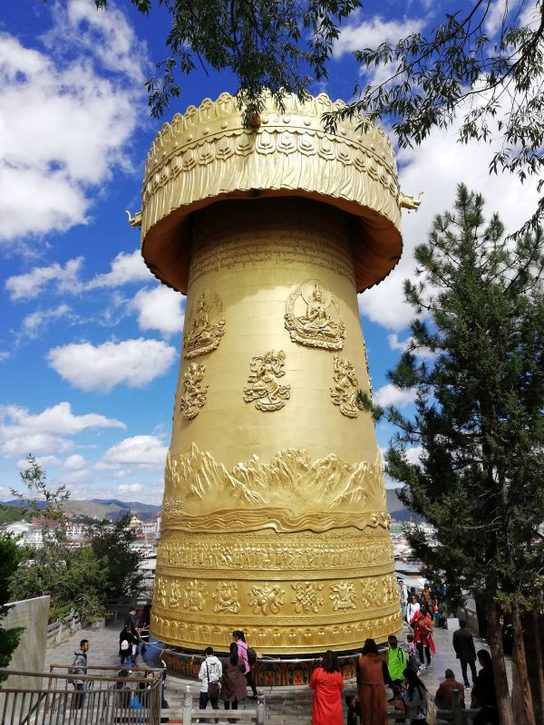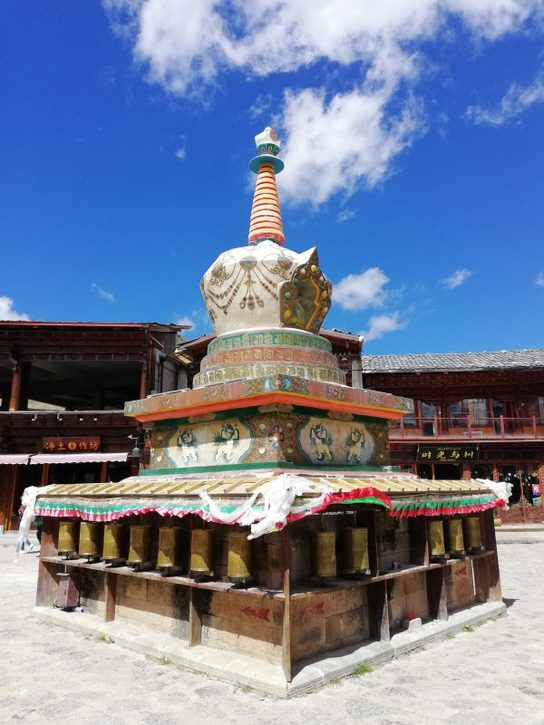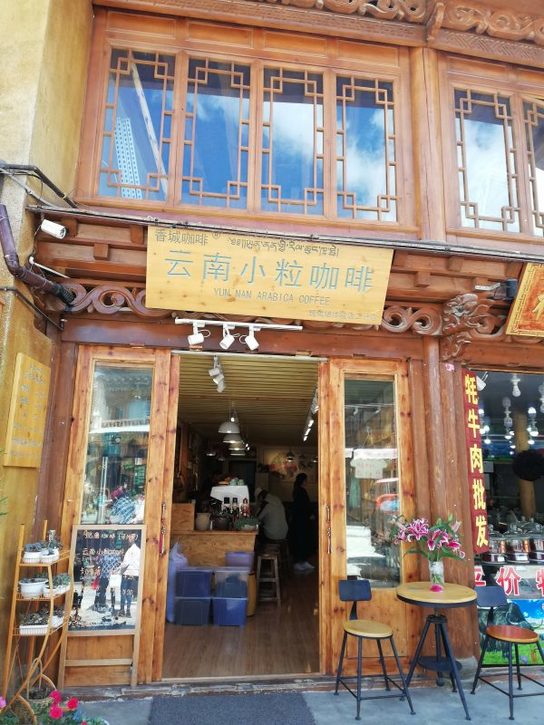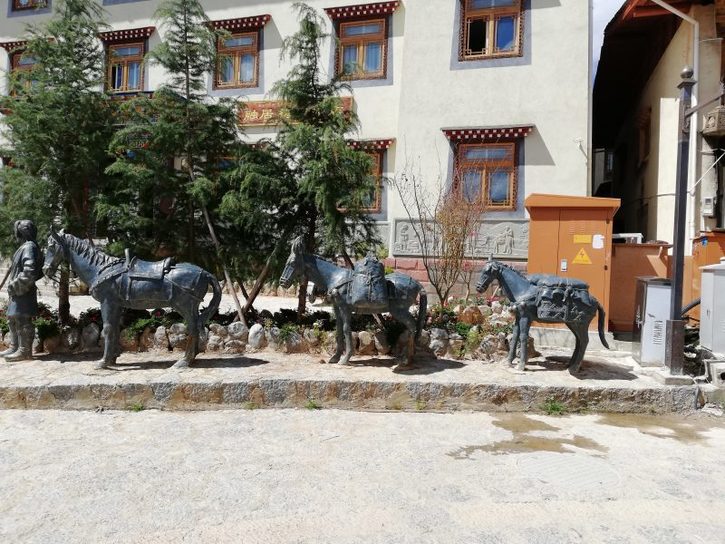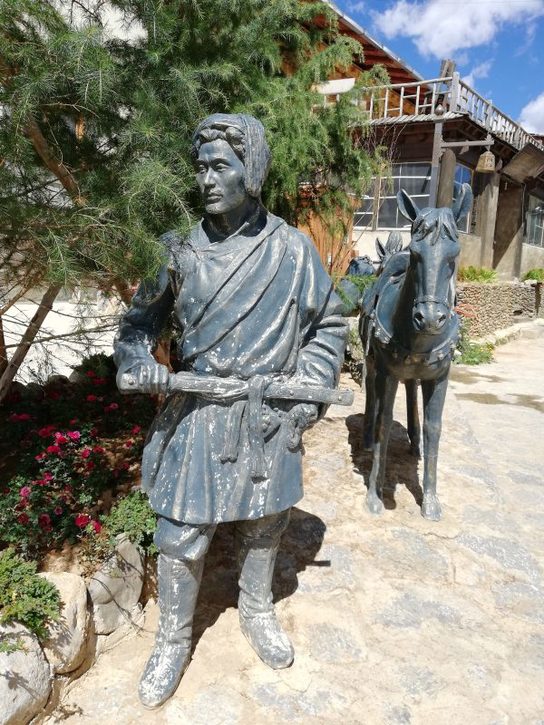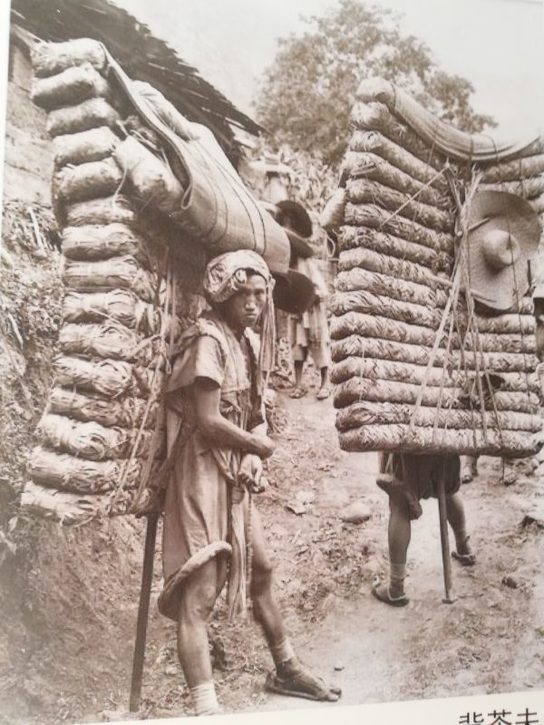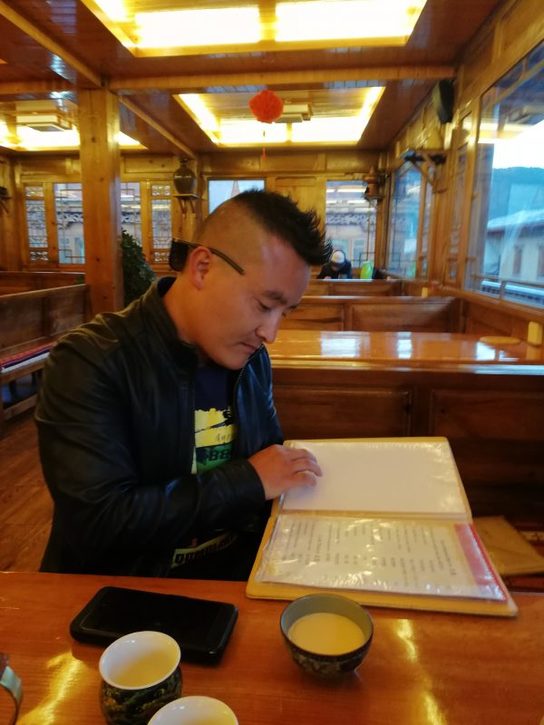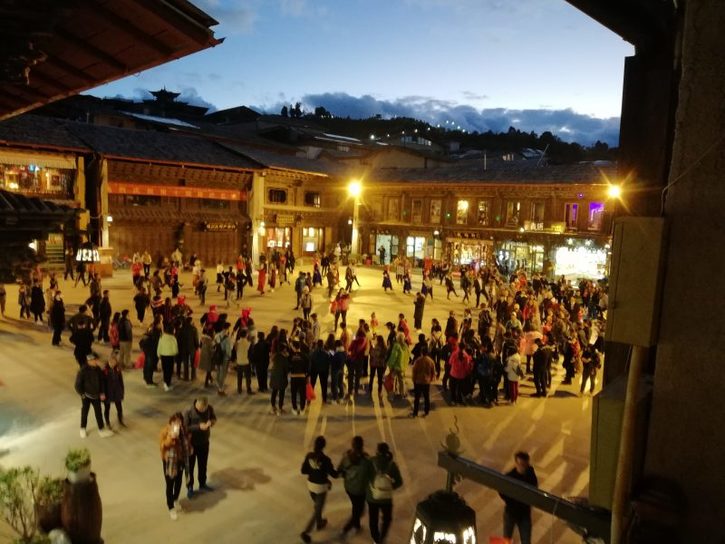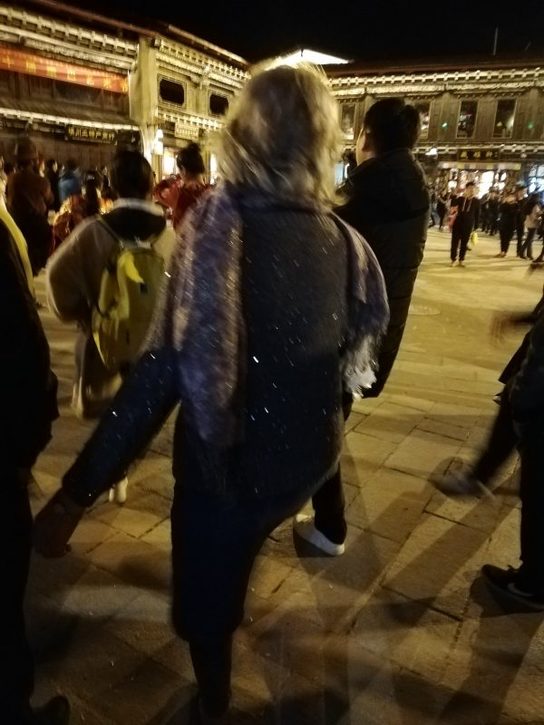Shangrila in the daylight was a million times better than at night time. Green came to our van in the morning and took us to the old city which is a mixture of Tibetan, Naxi, Hua and Han cultures reflected in the architecture and the costumes of some of the people. The main square had Tibetan mastiff dogs which could be photoed for £1 but we didn’t bother. The Long March museum had many photos of the Red Army passing through Zhongdian (former name of Shangrila) which was given its new name after a famous book “The Lost Horizon” was based on it. There is an excellent 3-D cinematic room where you can feel you are a member of the Red Army, crossing the mountains and eating grass and leather from your shoes to survive. There are pics of Tibetan monks welcoming the Red Army and of some of the bridges crossed by the Army over the Jinshan river. The museum is underneath a temple where young kids were being taught to chant Buddhist mantras.
The Shangrila museum has some beautiful costumes of the different ethnic groups of the region and very old relics from Buddhist monasteries. Especially interesting is a room celebrating American help to China against the Japanese in WW2 by supplying “Tiger Force” planes; the US General in charge was Claire Lee Cherault who, despite the name, was a tough looking bloke who married a Chinese lady who subsquently became the Ambassador for US-Chinese Relations
We then climbed many steps to the top of the hill in the centre of the Old City, which has a couple of beautiful temples and the world’s biggest prayer wheel. The main temple was rather small but extremely impressive. We helped other people to turn the massive vertical prayer wheel and made three clockwise circuits.
The Horse Tea Museum is located in a hotel but was fascinating with many old pics of donkey caravans carying sacks of Pu’er tea up rugged paths high in the mountains to Tibet, and bringing backs herds of horses and salt. The museum is primarily intended to celecrate the life of a Tibetan businessman who built up a huge business based on trade between China and Tibet. Pictures of Lhasa in he 1920’s when Tibet was still a closed country were particularly interesting.
We went for a meal with Green in the evening and met our charming Tibetan guide Tensing who speaks perfect English because he grew up in India before returning to Tibet. There was some dancing in the main square outside the restaurant, and we went to watch it after our meal. The music and dancing were Tibetan but people from all ethnic groups (Tibetan, Han, Naxi, Hua, Yi, Dai etc) were taking part. It was like line dancing but in a huge circle. Everyone appeared to know the quite complicated moves. It was very graceful and beautiful to watch. Jennifer joined in and copied the moves from the people in front of her. Some people were wearing national costume, but most wore their everyday clothes, which made it more spontaneous and authentic. We said goodbye to Green and went to bed.
